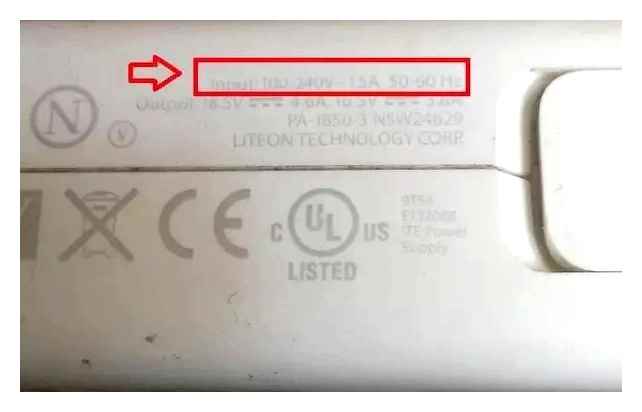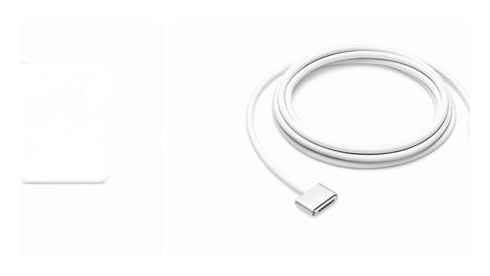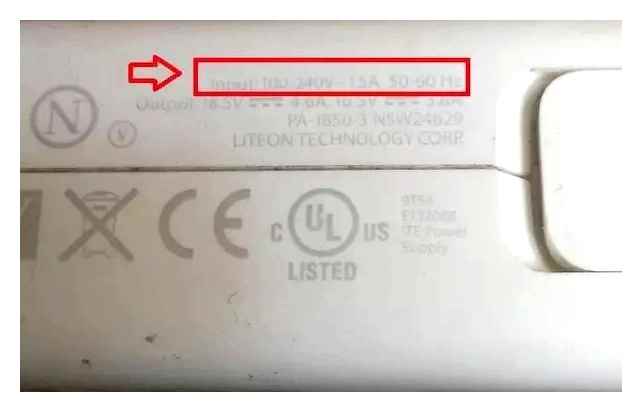Apple MacBook
MacBook Laptop power banks are specifically designed to charge MacBook laptops and tablets. 50000mah power bank will charge all generations of Macbooks as it comes supplied with both mag safe cables and also outputs in USB-c for the newer smaller 13inch MacBook pro and MacBook air. The same goes for the 25,000mah MacBook charger both offering great DC voltage versatility the only difference being is that the smaller version is under 100w/h and you will be able to take on a flight.
Apple MacBook Power Bank 45W pD, has a multi voltage USB-c output designed to charge older and newer MacBook pro and macbooks and can recharge a MacBook pro 13inch 1- 1.5 times or a MacBook twice. This unit is also flight safe so can be taken on a planes for air travel. Cable options available for magsafe gen 1 and gen 2.
Apple MacBook Power Bank 87W PD, If your looking for a bit more juice to charge up those bigger laptops like your 15inch and up also some high drain 13inch look no further than the 87W PD 26,800mah power bank. If is equipped with a high output USB-C charging in/out port that also has the ability to charge older magsafe laptops. The capacity of 26800mah brings it just under the 100w/h mark that the airlines like you to keep under (make sure you check with your airline before flying). Making this power bank the ideal travel companion.
Sale!
,000mAh MacBook Charger
NEWSLETTER DEALS
Signup for our newsletter to receive exclusive deals and offers.
CUSTOMER REVIEWS
Very happy with everything and when I asked about a specific issue they were on to it straight away.
Great product, great price, quick delivery. couldn’t ask for more
Great service and excellent product
Ordered a portable solar panel online. Arrived in due time. Extremely happy with the product. Excellent communication from the vendor.
Great Product, Quick Service. Really helpful!
Great product, quick postage and very helpful when I had questions
Check the power
If your MacBook charger is not working, it won’t charge your MacBook’s battery. So you need to make sure the charger is working fine.
Check the power outlet
First, you need to make sure that the power outlet is ok. You can plug a lamp or an AC-powered clock into the power outlet. This simple step lets you know whether the power outlet is working or not.
Check the AC power cord
The MacBook charger comes with a removable AC power cord. Check the power cord for wear and tear. Insert the plug into the wall outlet firmly. Don’t forget to check the power cord on the charger side. Make sure you insert the power cord into the charger firmly as well.

Check the DC cable
Next, carefully inspect the charger’s output cable, starting at one end and working your way through until the other. Look out for any fraying or tears in the cable. If flaws are similar to those shown in the photo below, this is likely the problem. Replace the charger or try another available charger.
In addition, the USB-C charger uses a removable USB-C charging cable. Make sure the USB-C cable is fully inserted into the charger. Believe it or not, these simple checks often fix the MacBook battery not charging issue.
If your MacBook starts charging when you wiggle the USB-C cable, the cable is not connected properly. The removable USB-C cable is prone to get damage by bending the plugs at the two ends. Stop using the cable immediately and get a new replacement cable.
Check for charger overheating
The MacBook charger can become warm during normal use. If you place the charger in a poorly ventilated area, such as on a sofa, bedding or a pillow, the charger may turn itself off if it gets too warm. Unplug the charger immediately and let it cool down before using it again.
Check for AC line noise
The AC line noise from power tools, fluorescent lights, refrigerators, and other sources may interfere with the MacBook charger. The charger will shut down when it senses too much line noise from a socket.
Usually, the line noise won’t last long. Unplug the charger, wait for 1 or 2 minutes and plug the charger back in to see whether the charger works or not. Other solutions include using an uninterruptible power supply (UPS) to filter out the line noise or plugging the charger into a different circuit, eg., the other side of a house or office, upstairs or downstairs.

If your charger keeps turning off, you most likely have a faulty charger. You need a new charger.
Use the right charger
Apple uses a few types of chargers for different MacBook models. The MagSafe 1 and 2 chargers come in 45W, 60W and 85W. The USB-C chargers come in 30W, 35W, 61W, 67W,87W, 96W and 140W. The new MagSafe 3 chargers come in 67W, 96W and 140W.
You may quickly get confused with the chargers if you have a few MacBook Airs, MacBook Pros, iPads and iPhones in your household. The low-wattage adapters are used in low-power consumption MacBooks like MacBook Airs and 12″ MacBooks, while the high-wattage adapters are used in 15″ and 16″ MacBook Pros.
If you use a low-wattage adapter in a high-power consumption MacBook, the power adapter barely provides enough power to run your MacBook but not enough power to charge the battery.
For example, if you connect a MacBook Air charger (30W) to a 15″ MacBook Pro (87W), you could get a battery not charging notification, and the charger will get hot very soon. You may still use your MacBook without draining its battery, but the battery won’t charge. If you turn off the Mac or put it to sleep, the power adapter will start charging the Mac.
Please refer to Apple’s website to find out the original stock adaptor for your MacBook. Identify your Mac power adaptor.
No matter how many Apple chargers you have, the basic rule is that the high-wattage charger can replace the lower-wattage charger, not the other way around. You may notice the high-wattage charger outputs a higher voltage, but it doesn’t matter. The MacBook charging circuit on the logic board will automatically adjust the voltage for your MacBook. So a higher-wattage charger will not harm your MacBook.
Also, the MagSafe 1, MagSafe 2, and MagSafe 3 chargers are not exchangeable as the size of the connectors are slightly different. You can’t fit a MagSafe 3 plug into a MagSafe 2 charging port.
Check battery health management settings
The battery health management is on by default when you run macOS Catalina 10.15.5 on a MacBook with Thunderbolt 3 ports. Your battery may drain to 90% or lower before it begins to charge again. This design feature extends the life of your MacBook lithium-ion battery. You can turn off this battery health management feature in Energy Saver preferences. We don’t suggest you change the setting unless you have a particular need.
In macOS Big Sur or later, you may get a “Charging On Hold” message on the Battery Status menu, and the MacBook battery is not charging. This new feature is for learning your charging habit and optimising battery charging. When the feature is enabled, your Mac will delay charging past 80% in certain situations
You may need to charge the battery fully if you plan to use the Mac on battery outside without a power outlet. Click “Charge to Full Now” in the battery status menu to start charging.
How To Identify the MacBook model
Before purchasing any parts, you need to know the specifications of your computer.
To identify MacBook year and model follow these steps:
- Click on Apple logo in the top left corner of the screen
- In the dropdown menu click on the first item “About This Mac”
- Under Overview tab locate the information about the MacBook type, size, and year.
For instance, in the screenshot above, I have MacBook Pro (Retina, 13-inch, early 2015).
Now I can locate my laptop in the MacBook Pro 13-inch model table and see that I need 60W MagSafe 2 power adapter.
The table also has an Amazon link which I can use to order the charger I need.
But before you proceed with the purchase, let me answer some commonly asked questions about MacBook chargers.
Using MacBook Air charger for MacBook Pro
According to Apple, it is acceptable to use power adapters with different wattages with MacBooks with a caveat. When using a charger from MacBook Air with a more powerful MacBook Pro expect a longer charging time.
For example, a MacBook Pro 13-inch 2012-2015 requires 60W MagSafe 2 charger.
However, it is possible to use a 45W MagSafe 2 charger (the one that comes with MacBook Air) without any issues. The difference is that the 45W power adapter has less power, and it may not charge fast enough while MacBook Pro is under heavy load.
I have both 45W and 60W chargers at home and found that 60W charger indeed works faster than the less powerful one.
At the same time, I was able to charge with a 45W adapter while watching YouTube videos. So yes, you can use a lower wattage charger with your MacBook.
Using a MacBook Pro charger for MacBook Air
It is perfectly safe to use a MacBook Pro power adapter on lower-wattage models, such as MacBook Air as long as the charging ports are compatible. However, a more powerful charger can wear out the MacBook battery prematurely.
For example, a MacBook Air 2012-2017 model requires 45W MagSafe 2 charger. But it is ok to use a 60W charger of a MacBook Pro with it.
A power adapter with more watts will charge MacBook Air faster.
On the other hand, the faster the battery is charging, the more heat it generates. Eventually, the extra heat may degrade the MacBook Air battery faster.
I have both MacBook Air 13-inch 2014 and MacBook Pro 13-inch 2015 models.
I use their chargers interchangeably, and I never had any issues in 4 years with either one. And I didn’t notice any abnormal battery degradation personally.
Apple chargers for a MacBook Pro
Since the very first model, MacBook Pros have been the go-to laptops for professionals across all fields. Introduced in 2006, they’ve since come in three sizes (13, 15, and 17 inches) and used a variety of processors, video cards, and batteries — all of which have a significant impact on the type of charger being used. So a MacBook Pro 2012 charger is quite different from a 2016 model, for example.
The latest MacBook Pros have been switched to USB-C cables, so if you have a 13-inch version of 2016 and later you’d use a 61W USB-C Power Adapter and if you have a 15-inch version of 2016 and later you’d use an 87W USB-C Power Adapter.
Older MacBooks split in lots of categories. Let’s go from the most recent to way back in time. The 85W MagSafe Power Adapter with MagSafe 2 style connector is for:
- MacBook Pro (15-inch, Mid 2015)
- MacBook Pro (15-inch, Mid 2014)
- MacBook Pro (15-inch, Late 2013)
- MacBook Pro (15-inch, Early 2013)
- MacBook Pro (Retina, Mid 2012)
The less powerful 60W MagSafe charger works with such Retina-enabled laptops as:
- MacBook Pro (13-inch, Early 2015)
- MacBook Pro (13-inch, Mid 2014)
- MacBook Pro (13-inch, Late 2013)
- MacBook Pro (13-inch, Early 2013)
- MacBook Pro (13-inch, Late 2012)
The older 60W MagSafe adapter with L-style connector works on:
- MacBook Pro (13-inch, Mid 2012)
- MacBook Pro (13-inch, Late 2011)
- MacBook Pro (13-inch, Early 2011)
- MacBook Pro (13-inch, Mid 2010)
Another L-style 85W MagSafe Power Adapter is compatible with:
- MacBook Pro (15-inch, Mid 2012)
- MacBook Pro (15-inch, Late 2011)
- MacBook Pro (17-inch, Late 2011)
- MacBook Pro (15-inch, Early 2011)
- MacBook Pro (17-inch, Early 2011)
- MacBook Pro (15-inch, Mid 2010)
- MacBook Pro (17-inch, Mid 2010)
Finally, the T-Style connectors work on the oldest of MacBooks. The 60W MagSafe adapter with T-style connector is good for:
Its bigger cousin, the 85W MagSafe charger with T-style connector covers the rest:
- MacBook Pro (15-inch, Mid 2009)
- MacBook Pro (17-inch, Mid 2009)
- MacBook Pro (17-inch, Early 2009)
- MacBook Pro (15-inch, Late 2008)
- MacBook Pro (17-inch, Late 2008)
- MacBook Pro (15-inch, Early 2008)
- MacBook Pro (17-inch, Early 2008)
- MacBook Pro (15-inch, 2.4 or 2.2 GHz)
- MacBook Pro (17-inch, 2.4 GHz)
- MacBook Pro (15-inch, Core 2 Duo)
- MacBook Pro (17-inch, Core 2 Duo)
- MacBook Pro (15-inch)
- MacBook Pro (17-inch)
- MacBook Pro (original)
Where to buy Apple power adapters
Once you know which Mac charger you need, you might be wondering where to buy one. The most no-brainer option is, of course, visiting your local Apple store or ordering from Apple.com. But if you want to save a few dollars or get a special deal, you can also check some other places in the process.
Note: There’s a lot of no-name (or even counterfeit) Apple-like products on the market, which might not work as advertised or, in some cases, damage your Mac. That’s why it’s only recommended to buy Apple power adapters only from large, trusted retailers.
Just a quick look at the 30W USB-C Power Adapter for MacBook Air gives us the following breakdown:
- Apple’s official website simply lists the Apple MacBook Air charger for 49
- Amazon lists the same charger with a discount at 43
- BestBuy matches the 49 standard price but also offers four months of Apple Music for free if you’ve never subscribed before
- Walmart drops the price to 43 to match Amazon
Right away you can see that Amazon and Walmart offer a better deal, whereas BestBuy would be great for those who haven’t tried Apple Music yet. So make sure to check those retailers (at least) when you’re shopping for your new Apple power adapter.
When to replace your MacBook charger
How do you know when to buy a new charger? Obviously you need one when the old charger fails. But sometimes your adapter might simply start working slower than usual, which is quite difficult to pin down, unless you use robust monitoring software.
iStat Menus is an all-in-one system monitor that not only tracks your battery life, as well as charging cycles and speed, but also your CPU and RAM usage, internal temperature, and network quality. With no scans to perform, you can simply look at your iStat Menus charts in your Mac’s menu bar to have a clear overview of your machine’s performance at any time.
How to extend your battery life
At one point or another, every Mac owner has wondered how great it would be to make their Mac’s battery last longer. What would be even better is to have a comprehensive ongoing solution in place.

Endurance is a lightweight utility that manages all aspects of your Mac that could result in extended battery life. By slowing down your Turbo Boost, dimming your screen, and hiding background apps, Endurance can give you up to 20% more unplugged time with your MacBook. Seems like a dream come true.
In the end, when you’re about to go shopping for a charger, consult the list above and then check at all the official Apple distributors. And don’t forget to use some nifty utilities to know what exactly is going on with your Mac.
Best of all, iStat Menus and Endurance are available to you at absolutely no cost via Setapp, a platform with more than 170 top-of-the-game utilities and apps designed to make your work and life a breeze, from keeping an inventory of your home (check out Home Inventory) to making the most out of your MacBook speakers (Boom 3D). Try Setapp today and get unlimited access to the best apps in the world! Why not?
